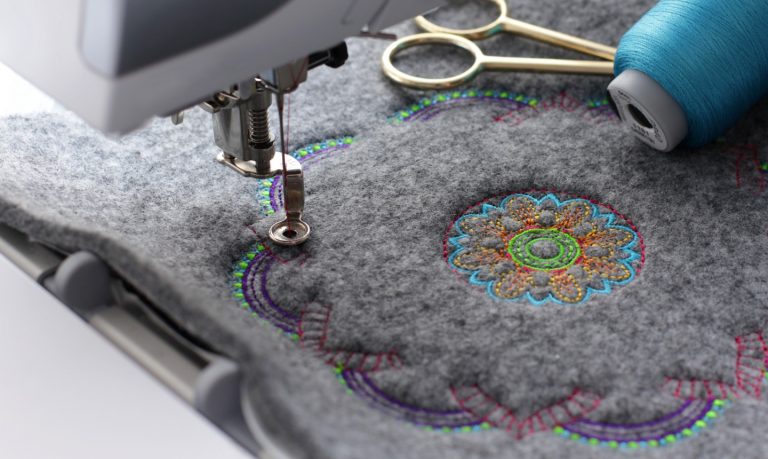High-Quality Digitizing for Embroidery: Expert Workmanship
High-Quality Digitizing for Embroidery: Expert Workmanship
Blog Article
Mastering the Embroidery Digitizing Refine: Your Ultimate Guide
Embroidery digitizing is a careful craft that requires precision and proficiency to equate complex designs right into digital formats for equipment embroidery. As artisans begin on this trip to understand the embroidery digitizing process, an extensive understanding of the basics sets the foundation for quality. Nonetheless, past the basic understanding exists a world of innovative software application, specialized devices, and nuanced strategies waiting to be discovered. By delving into the nuances of digitizing, one can unlock a globe of imaginative opportunities and boost their needlework tasks to brand-new elevations.

Understanding Embroidery Digitizing Basics
Embroidery digitizing basics form the foundation upon which intricate designs are translated into machine-readable layouts for specific stitching. This first step in the embroidery digitizing process is crucial for ensuring that the last stitched item is a devoted representation of the original style. Recognizing needlework digitizing fundamentals includes realizing vital principles such as stitch kinds, stitch direction, thickness, padding, and pull payment.
Stitch types play an important role in establishing the visual and textural outcome of the stitched style. By choosing the appropriate stitch kind, whether it be satin, fill, or running stitch, digitizers can attain the preferred effect and improve the general high quality of the embroidery. In addition, stitch instructions affects the flow and measurement of the style, while density establishes the spacing and protection of the stitches.
Additionally, padding sewing supplies stability to the layout by protecting the material and preventing distortion throughout the embroidery procedure. Pull settlement is another essential factor to consider to counteract the all-natural tendency of fabric to agreement when stitched. Grasping these embroidery digitizing fundamentals is fundamental for producing professional-quality stitched products.
Choosing the Right Digitizing Software Application
Picking the suitable digitizing software program is an important choice that considerably affects the performance and top quality of the embroidery digitizing process. Digitizing for Embroidery. When choosing the ideal digitizing software program, it is necessary to think about aspects such as the intricacy of layouts you plan to create, the user-friendliness of the software application, the level of client assistance used, and the compatibility with your needlework equipment
There are numerous digitizing software options available on the market, ranging from basic programs for novices to sophisticated software program for professional digitizers. Some popular choices consist of Wilcom EmbroideryStudio, Hatch Needlework Software Program, and PulseID. These software program plans use a large variety of tools and functions to help you create detailed designs effortlessly.
Before deciding, it is advisable to discover the various software application options through free tests or demonstrations to identify which one best matches your demands. Additionally, checking out evaluations and seeking suggestions from knowledgeable digitizers can offer valuable understandings into the strengths and weak points of each software application package (Digitizing for Embroidery). By meticulously examining your click here for more demands and contrasting the functions of different digitizing software program, you can make an educated choice that improves your embroidery digitizing operations
Digitizing Tools and Strategies

Optimizing Layout Setup for Needlework
Mastering the ins and outs of design setups is basic in accomplishing optimum results in the needlework digitizing procedure, building upon the structure laid by understanding digitizing devices and methods. When maximizing design settings for needlework, it is important to take into consideration factors such as stitch type, thickness, underlay, pull payment, and enrollment. Registration settings line up different elements of the style properly, maintaining overall style integrity.

Troubleshooting Common Digitizing Issues
When running into common digitizing concerns during the embroidery procedure, it is necessary to recognize the source and site web apply efficient options promptly. One typical trouble is stitch thickness issues, where stitches might be also dense, causing the material to tighten, or too sporadic, causing voids in the design. Changing the stitch thickness setups in the digitizing software application can aid resolve this problem.
One more constant obstacle is thread breaks during the embroidery process. This can happen as a result of numerous reasons such as incorrect tension settings, boring needles, or utilizing low-grade string. Making sure correct upkeep of the needlework equipment, consisting of regular needle changes and tension adjustments, can reduce the incident of thread breaks.
Additionally, style enrollment mistakes can cause misaligned components within the needlework layout. Examining the design positioning in the digitizing software program and making needed changes prior to sewing can assist in preventing this problem. By dealing with these typical digitizing issues quickly and efficiently, you can guarantee a smoother embroidery process and premium finished items.
Final Thought
In verdict, grasping the embroidery digitizing process calls for a strong understanding of the fundamentals, the best choice of software, and expertise of devices and methods. Optimizing layout setups and fixing typical digitizing issues are crucial actions in making certain high-grade needlework results. By adhering to these actions vigilantly, one can attain accuracy and efficiency in the digitizing procedure.
Report this page